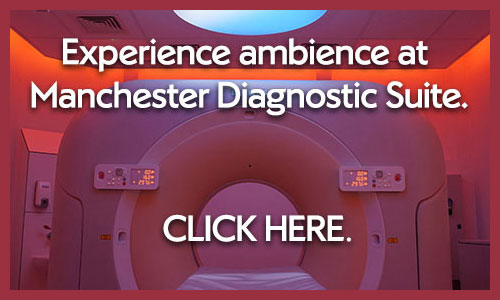Ambient technology: Putting patients in control of diagnostic scans
- Overview
- Full article
I'm in a room with a big, white CT scanner. A machine capable of looking right through me and confirming my worst suspicions, or dismissing them - just like that.
But this room and others at the Nuffield Health Diagnostic Suite in Manchester have something different about them, something that puts the patient back in control. With a combination of lighting, soundscapes and video projections, the room is transformed into a beach, a forest or a desert canyon at the touch of a button.

It's called Ambient Experience from healthcare innovators Philips, who also supply most of the diagnostic machinery here. I'm meeting with Patrick Lerou, Senior Business Development Manager from Philips Healthcare Experience Solutions, who takes a staunchly patient-centric approach to his job.
"Imagine you are a patient and you are called into an MRI room and you hear the noise of the MRI with the magnet. There's no control over the procedure, you might be diagnosed with a disease, there's a lack of control over your own body," says Patrick.
Patrick's not speaking from some distant business development position, he's recounting his own experience as a patient worried about feeling claustrophobic as he entered the bore of an MRI scanner only to experience the space being transformed into the ocean, complete with dolphins swimming by.
Other patients sometimes react to MRI scans in a similar way to Patrick. But instead of focusing on being in an MRI or the results, ambient technology helps to transport patients out of the bore.
Ambient technology is a decade-old invention, but for a long time Philips struggled to make it work in the MRI environment. For cranial scans patients are required to go head-first into the bore and stay there for prolonged periods of time. With their field of vision narrowed to the space immediately in front of them, ambient technology that transforms the room outside the bore is useless.
"What we needed was to open up their field of vision and transport them outside the bore," says Patrick.
The breakthrough was as simple as it was effective - a mirror placed over the patient's head that enabled them to see out the back of the machine to the wall behind, where the video could be projected in an unconfined space.
"We had our solution to the in-bore problem," he says.
The technology is fully integrated into Nuffield Health's Manchester Diagnostic Suite.
Last updated Tuesday 7 February 2017
First published on Monday 7 November 2016

